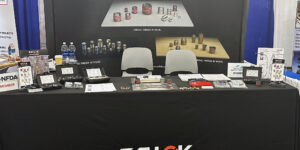THE 21st CENTURY CROP
The American Wind Energy Association explains how wind energy could potentially provide 20 percent of our electricity by 2030 and create thousands of jobs without consuming any natural resources or emitting any pollution or greenhouse gases.
Posted: May 1, 2009
Call it The Next Big Thing. Wind energy has moved from an environmental dream into a mainstream energy source. Just how big this industry will actually get is still anybody's guess, but consider these facts.Wind power capacity has grown in the U.S. alone by an average of 32 percent each year for last five years. Last year, a record-shattering total of 8,358 MW of wind generation was installed ? about 42 percent of the entire new U.S. generating capacity added all year. That's enough to power more than 2 million American households annually.
Besides expanding our cumulative total capacity to 25 GW, this channeled some $17 billion worth of new investments into our economy and added over 13,000 new manufacturing jobs. The wind industry now employs 85,000 people nationwide.
Though all of this growth positioned wind power as a leading source of new power generation in our country, along with natural gas, by year?s end financing for new projects and orders for turbine components slowed to a trickle and layoffs began to hit the wind turbine manufacturing sector.
"Our numbers are both exciting and sobering,? says AWEA CEO Denise Bode. ?The U.S. wind energy industry?s recent performance confirms that wind is an economic and job creation dynamo, ready to deliver on the President?s call to double renewable energy production in three years.
"At the same time, it is clear that the economic and financial downturn have begun to take a serious toll on new wind development," Bode continues. "We have seen layoffs in the area where wind?s promise is greatest for our economy: the wind power manufacturing sector. Quick action in the stimulus bill is vital to restore the industry?s momentum.?
With the right government policies, this cost-effective source of energy could provide at least 20 percent of the nation?s electricity by 2030, create thousands of jobs, and revitalize farms and rural communities without consuming any natural resource or emitting any pollution or greenhouse gases. What opportunities does this present for metalworkers?
OPPORTUNITIES ABOUND
Metal components make up nearly 90 percent of the weight and over one-third of the value of a modern wind turbine. The 4,500 turbines of various sizes installed during 2008 translates into 13,500 tower sections, 2.25 million fasteners and 24,600 miles of rebar in the turbine foundations.
The $7.8 billion investment in wind turbine equipment in the U.S. last year translates into a $3 billion industry for steel or cast iron components ? and the demand is projected to nearly double annually during the next few decades. The rapid growth the industry has experienced and is expecting to see in the future opens up new opportunities for forges, foundries, fabricators, machine shops and integrators that can produce the thousands of components and sub-assemblies that go into a wind turbine. These components begin as castings, forgings or fabrications and their integrity must be validated prior to any processing.
Upon passing initial quality inspections, they undergo multiple machining operations, post-processing such as heat-treating and stress relieving, and then are typically coated to prevent corrosion. Upon passing final quality inspection, the components are delivered to the OEM for assembly, testing and shipment to the wind farm for installation.
Wind turbines have many subsystems that include the nacelle yaw and blade pitch units. There are fluid systems used for lubrication, cooling and hydraulic power. Electronic control systems are utilized for the generator and power electronics, as well as the yaw and blade pitch systems.
HOW GREEN IS IT?
New wind projects completed last year will avoid nearly 44 million tons of carbon emissions, or the equivalent of taking over 7 million cars off of the road. Looking ahead, 300,000 MW of wind energy (20 percent of U.S. electricity by 2030) would avoid 800 million metric tons of CO2 emissions annually by 2030.
FORGED PARTS
The main shaft and gear blanks are hammer- or press-formed, while bearing rings and tower flanges are rolled as seamless rings. The rolled rings used in today?s turbines measure up to 6 m in diameter and 12 tons in weight. One U.S. supplier recently increased its capacity to make seamless rolled rings that exceed 7 m in diameter and 17 tons in weight. Additionally, one forge bought a 4,500 ton hydraulic press to produce main shafts that weigh up to 18 tons.
CAST PARTS
Cast iron is typically used for the rotor hub, mainframe, forward housing or frame, gearbox housing and bearing housings. Depending on the size of the turbine, one wind turbine requires between 10 and 25 tons of ductile iron castings ranging in size from less than 100 lb to 50,000 lb (45-22,680 kg). Some wind turbines? rotor hubs weigh 36,000 lb (16,000 kg) and can be as large as 15 ft (4.6 m) in diameter. Like the hubs, the bases are castings of ductile iron in a grade with superior low-temperature properties. The bases are configured like gigantic, bowl-shaped lower jaws and can exceed 32,000 lb.
The majority of wind turbine parts are made out of the more challenging ductile iron grades, such as the EN specification 1563. This grade of ductile iron features the properties necessary to withstand the force of the wind and longterm exposure to the environment without failure. The castings must achieve high-impact strength at low temperatures, so the metal must be modified to achieve lower silicon and phosphorus levels. The alloy also must have high nodularity without a high nodule count, so great care is taken during solidification to achieve optimal nodularity.
Wind turbine manufacturers prefer these properties to be met as-cast in the critical castings. The components must pass stringent mechanical property tests and are subjected to extensive non-destructive evaluations that include ultrasonic, magnetic, and penetrant inspection methods.
EVEN MORE JOBS
Construction of a new national high-voltage transmission grid or ?green power superhighway? is needed to carry electricity generated by renewable energy to the more populated areas where demand is highest.
MACHINED PARTS
Studs, bolts and nuts are either machined or forged, depending on the application or the client specification. High quality fasteners, washers and dowel pins are utilized for internal and external bolting of the tower sections, blade and hub joints, and nacelle components such as the generator and gearbox assemblies. Many of the main components are large castings with features that require hundreds of hours of precision machining.
The processing of these components includes boring, milling, drilling, tapping, turning and welding.
Handling these large castings requires stout cranes and other material handling devices and, most importantly, machine tools that can accommodate the enormous size and weight while machining them with great precision.
BARRIERS
The barrier facing most metalworkers who consider entering the wind industry is four-fold:
? The ability to efficiently handle the heavy large scale components
? Meeting the rigorous quality requirements
? Maintaining on-time delivery with constantly increasing quantities
? Achieving cost competitiveness in a global market
In terms of potential bottlenecks, major current constraints involve problems with industrial gearboxes, large bearings, and generators/generator components. Some anticipated constraints include crane availability, domestic transport capacity and permitting, and finding qualified personnel.
The lack of certainty in U.S. federal policies causes fluctuation in the demand for wind turbines and impacts annual sales projections. The federal government?s main policy mechanism to support renewable energy expansion for the past 15 years has been the renewable energy production tax credit (PTC).
Currently, projects completed before the end of 2009 are eligible to receive the credit, but the short extension time frame makes it difficult for companies to justify investing in new state-of-the-artequipment or retrofits to accommodate the large components and meet the prescribed tolerances and quality levels the industry requires.
Until the recent financial crisis, the price of steel and the small number of suppliers of raw materials have been bottlenecks. One bearings manufacturer, for example, purchases cylindrical steel ingots for their applications, either continuous cast or bottom-poured. The company requires raw materials at least 10 in in diameter, up to a maximum of 42 in in standard carbon-steel specifications. Although smaller-diameter ingot is readily available, there are few suppliers of larger ingots.
MANUFACTURING CAPACITIES
There are currently 16,000 manufacturing firms in the U.S. that can produce one or more of the 8,000 components that typically go into a wind turbine (see Figures 1, 2).
In terms of manufacturing locations, over 40 states spread across the U.S. host wind-related manufacturing. With the growth in the industry, many states have recently entered into the supply chain. In terms of new manufacturing capacity, between 1Q 2007 and 3Q 2008 (21 months), there was significant growth in the industry?s manufacturing capacity, with 17 new facilities online, 22 announced facilities, and 15 announced facility expansions. A total of 54 facilities have come online, been announced or expanded.
In terms of the U.S. turbine market, there are well over 120 manufacturing facilities for turbines and large components currently online in the U.S., but there is still a lot of importation. There is growth in the U.S. turbine market, however, with many new online facilities, as well as several that have been announced.
In terms of the U.S. tower and blade markets, there are 26 online or announced tower manufacturing facilities, and 11 companies with existing or planned blade manufacturing facilities in U.S. There are currently 17 online or announced blade manufacturing facilities. In terms of the U.S gearbox market, there are four companies with existing or planned gearbox manufacturing facilities in U.S.
Wind power?s recent growth has accelerated job creation in manufacturing, where the share of domestically manufactured wind turbine components grew from under 30 percent in 2005 to about 50 percent in 2008. Wind turbine and turbine component manufacturers announced, added or expanded 70 new facilities in the past two years, including over 55 in 2008 alone.
The bottom line is this: if wind energy generation expands to the extent that it is providing 20 percent of U.S. electricity by 2030, that will create an estimated 500,000 direct and indirect jobs. Without question, wind energy is becoming the crop for the 21st century. Metalworkers must take heed of the winds of change around them. It's The Next Big Thing.
– – – – – – – – – – – – – – – – – – – – – – – – – – – – – –
American Wind Energy Association (AWEA), 1101 14th Street, NW, 12th Floor, Washington, DC 20005, windmail@awea.org, www.awea.org.









